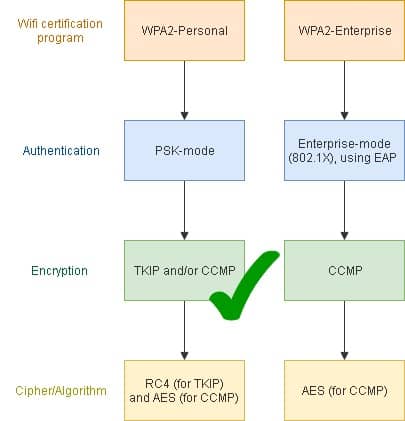

In other words, flipping bit n in the message results in a deterministic set of bits in the CRC that must be flipped to produce a correct checksum on the modified message. However, CRC-32 is linear, which means that it is possible to compute the bit difference of two CRCs based on the bit difference of the messages over which they are taken. The integrity check field is implemented as a CRC-32 checksum, which is part of the encrypted payload of the packet. However, both of these measures are implemented incorrectly, resulting in poor security. To avoid encrypting two ciphertexts with the same key stream, an Initialization Vector (IV) is used to augment the shared secret key and produce a different RC4 key for each packet. To ensure that a packet has not been modified in transit, it uses an Integrity Check (IC) field in the packet. WEP has defenses against both of these attacks. Once one of the plaintexts becomes known, it is trivial to recover all of the others. The statistical attacks become increasingly practical as more ciphertexts that use the same key stream are known. Knowledge of this XOR can enable statistical attacks to recover the plaintexts. Also, if an eavesdropper intercepts two ciphertexts encrypted with the same key stream, it is possible to obtain the XOR of the two plaintexts. If an attacker flips a bit in the ciphertext, then upon decryption, the corresponding bit in the plaintext will be flipped. This mode of operation makes stream ciphers vulnerable to several attacks. XORing the key stream with the ciphertext yields the original plaintext.

The receiver has a copy of the same key, and uses it to generate identical key stream. The sender XORs the key stream with the plaintext to produce ciphertext. A stream cipher operates by expanding a short key into an infinite pseudo-random key stream.

Unfortunately it was discovered that WEP had some serious flaws. WEP was the first algorithm used to secure wireless access points. There are several popular types of encryption for wireless networks: The OP wanted to know more about what methods were available to break into a wireless network and how long it would take. Recently I answered a question on regarding security in wireless protocols.


 0 kommentar(er)
0 kommentar(er)
